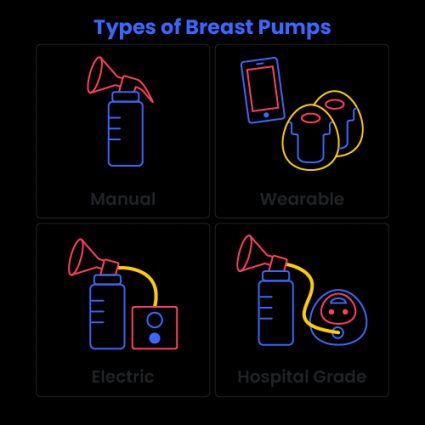Exclusive Pumping Calculator
The exclusive pumping calculator will help you with your breastfeeding goals! Do you plan to feed your baby frozen breast milk until their first birthday? You found the right tool!
Don’t you know how much milk you need to store? Don’t worry! The exclusive pumping calculator will help you find the amount of milk needed for your baby and tell you exactly how many days you still have until you stop pumping!
Whether you’re pregnant and planning to exclusively pump, you are already doing so, or you are returning to work and want to build a freezer stash, being prepared can help make the experience easier. Keep reading to discover everything about pumping!
We try our best to make our Omni Calculators as precise and reliable as possible. However, this tool can never replace professional medical advice, diagnosis, or treatment. All information on this website is for informational purposes only and is not intended to and should not serve as a substitute for medical consultation. Always seek the advice of a health provider.
What is exclusive pumping?
Exclusive pumping is when you feed your baby only pumped (or expressed) milk instead of direct breastfeeding. So you express milk from your breast using a pump and feed the baby with this milk (usually in a bottle 🍼 ).
Breastfeeding difficulties are highly prevalent in the early postpartum period. can experience some problems related to breastfeeding, and this is one of the reasons why some of them decide not to breastfeed and pump instead of giving formula to their babies. The main reasons for pumping are:
-
When the baby is premature, and you are not allowed to nurse (when they are intubated, for instance);
-
When babies are not latching as they should;
-
When babies have some congenital condition, heart issue, cleft palate, tongue tie, or any other illness or oral anomalies;
-
When the baby refuses the breast or prefers to sleep instead of eat and is not gaining weight properly;
-
When mothers have to go back to work;
-
When you have tried your best to breastfeed, and it does not work; or
-
When you decide that is the best option for you!
How to pump breast milk
If you have never used a breast pump before, it might feel weird at the beginning, especially if you don’t have much milk. But don’t worry, you will get used to it! The first thing you should worry about is choosing the right pump for you because you will be using it for a long time.
✅ A golden tip is to choose the right flange. Otherwise, the flange can even hurt you, or, in the best scenario, you will not reach your full potential in producing milk.

The flange is the part of the pump that goes on the nipple and forms a vacuum seal with the areola. The best time to measure your flange size is after your baby is born because your nipple size fluctuates throughout pregnancy.
You can choose your pump depending on your needs and preferences. You can consider the efficiency, the noise it makes, the brand, the price, or if it’s hands-free (wearable pumps) or not. The main types of pumps are:
- Manual pumps;
- Battery-powered pumps or wearable; and
- Electric pumps.

If you are planning to build a freezer stash, the manual pump is definitely not for you. You will be doing it several times every single day, so the electric or battery-powered pumps should fit you better. When you are at the hospital, they usually give you a more efficient pump, so you might want to buy one of these. You can also choose from single or double pumps; if you invest in a wireless pump, the double one will save you a lot of time.
Tips on a better pumping experience:
When you are pumping, try to be comfortable and relaxed (not always easy with a baby at home), but this can be important to elevate your oxytocin hormone levels and get more milk produced. Try to do something that can help take the pressure off, like watching some TV show you like.
Some people argue that hands-free pumps are not suitable because you are not focused on pumping. However, some others say that is the best solution to get through this journey, where you find time to do other things while pumping (particularly good when you have another child at home 🧒).
❗ And, last but not least, don’t forget to drink water!

Advantages of exclusively pumping
Being a pumping mother is not as easy as some people might think. It requires a lot of effort and time since you have to both pump breast milk and then feed this breastmilk to your baby, not to mention all the extra cleaning of pumps and bottles.
OK… But what are the advantages of pumping? Of course there are a lot of advantages, otherwise, nobody would do it, right? So here are the advantages of exclusively pumping:
-
Exclusively pumping allows you to track your baby’s milk intake. It lets you know exactly how much milk your baby is consuming, which can help ensure they are getting enough to grow healthy and strong.
-
Others can help feed your baby. With pumped breast milk, anyone can feed the baby, allowing the mother to rest or take a break while someone else takes over feeding duties.
-
Since the mother is not the only one in the process, it can improve the relationship between the child and other family members, especially the father.
-
It can help in the mother’s sleep (and the baby’s, as well!) firstly because the father can take the night shifts and secondly because the baby doesn’t associate breastfeeding with sleep.
-
Mothers can go back to work regardless of worrying about the baby’s feeding needs.
-
If you can express more milk than the amount your baby requires, you can build your freezer stash and stop much earlier. Some women stop pumping when the baby is 6 months old and still have enough milk for when the baby is 1 year old.
Pumping schedule
If you decide to exclusively pump, you will need a pumping schedule to avoid problems with your milk supply or clogged ducts.
You can structure your exclusive pumping schedule in different ways, and of course, you should do whatever works best for you:
- Pumping at the same time every day;
- Pumping every “x hours”; or
- A schedule where you pump whenever the baby finishes eating.
Your pump schedule might change during your journey. In the first months, you should pump at least 8 times per day because your milk supply is still being established in this period. Milk production is driven by demand, which means the more you express milk, the more your body will produce. When the baby becomes older, you can decrease the number of sessions, as your body already understands how much milk it should make, and your baby's intake is more stable.
🔎 Something you should keep in mind is the importance of pumping during the night, so you don’t drop your milk supply, especially in the first 8-12 weeks. This is the time when the hormone responsible for producing milk, .
Besides, studies show moms who exclusively pump for a minimum of (120-minute rule) can make enough milk to feed their babies.
Here is one example of a pumping schedule:
0-3 months 15’ 8-12 sessions | 3-6 months 15’ 8-12 sessions | 6-9 months 30’ 5-6 sessions |
|---|---|---|
07:00 | 06:00 | 07:00 |
11:00 | 10:00 | 11:00 |
13:00 | 14:00 | 15:00 |
16:00 | 18:00 | 20:00 |
18:00 | 22:00 | 22:00 |
21:00 | 02:00 | 01:00 |
00:00 | ||
04:00 |
How to use the exclusive pumping calculator
Using our calculator is easier than pumping! Here is the step-by-step of how to use it:
-
If you don't know how much milk your baby drinks (or should drink) in a day, go to the section
I don't know my baby's milk intake. -
Input your baby’s age and weight, and you will have how much your baby needs per day, as well as the number of feedings and the amount per feeding.
-
Alternatively, if you already know the amount of milk per feeding and the number of feedings per day, you can have the total of milk per day.
-
However, if you already know all this information, you can skip to the next section,
I know my baby's milk intake. -
Input the amount of milk you pump per day and the amount of milk your baby drinks per day.
-
Tick the checkbox if you want to add a bumper (you will probably need it in case of an unforeseen event, like when your milk supply decreases).
-
The next step is to input the baby's age now, and the baby's age when your stash will be over. For instance, if your baby is 3 months and 15 days, you should input 3.5 months or 105 days (you can change the units if you prefer).
-
Finally, you should add the existing freezer stash, if you have any frozen milk.
The exclusive pumping calculator will give you how much milk you will pump and how many days you have left (or weeks, months, hours, be free to choose the unit you desire). Do you already have a goal of when you want to stop pumping? Our calculator works in both ways! So insert your baby's details, and the calculator will give you the amount of milk you should pump in a day!
🔎 You can also check our baby's milk intake calculator and our baby formula calculator.
Tips to increase your milk supply
During your pumping journey, you might experience some decrease in your milk production. This usually happens in the postpartum because your body is still in the process of producing milk. It also can happen later due to the baby's suction (not latching correctly), and in the case of exclusively pumping, the main reasons are stress, anxiety, illness, or when the mother is not eating or drinking properly. But the good news is that you can revert this by using some strategies:
-
First, check if you're using the right breast pump (if it's working properly and that the parts fit correctly).
-
Try pumping more often. If your schedule is already in each 3 hours, try to make it 2 hours, at least for 72 hours.
-
Try power pumping. Power pumping is a method of pumping that mimics "cluster feeding" when the baby is frequently on and off the breast. This gives your body a signal to increase supply.
-
Drink more water and healthy foods.
-
Use milk-producing products (supplements, oatmeal, milk cookies, and teas).
-
Do skin-to-skin with your baby. The hormone oxytocin is released during skin-to-skin contact. The oxytocin promotes prolactin, which is responsible for milk production.
If you are struggling with low production, you should find a lactation consultant to advise you.
Where and how to store the breast milk
You probably will need a deep freezer to hold your breast milk. So, the step-by-step instructions for storing your milk are right below:
-
As soon as you finish pumping, transfer the milk to a bag that can be frozen. You can also reserve it in the fridge and mix all the milk you pumped during the day. Make sure to mix it only when they are at the same temperature, and never mix at different temperatures. Mixing freshly expressed breast milk with cooled or frozen milk .
-
Remember to store small amounts to avoid wasting milk. Store in 2 to 4 ounces, or the amount offered at one feeding.
-
Label the bag with the date and the amount of milk.
-
It is better to freeze the milk flat, so you have more space in your fridge;
-
Once it is frozen flat, you can stack the bags in a bigger bag and label them with the dates. This will help you find old milk.
-
Before you build a big freezer stash, remember to test your frozen milk by giving it to your baby!
❗ If you are planning to move or to travel, make sure your plan is steady! Expressed breast milk may be stored and transported in an insulated cooler bag with frozen ice packs for up to 24 hours.
FAQs
How do I know I’m pumping properly?
Some women experience pain while pumping, but this probably means that you are not pumping properly, either because of your flange’s size or because you are using a higher suction. It can be uncomfortable, especially in the beginning, but pumping should not hurt. If in doubt, please always consult your lactation consultant or other healthcare professional.
What is power pumping and how to power pumping?
Power pumping is a method of pumping that imitates when the baby is on and off the breast often. This gives a signal to your body to increase your supply. There are different approaches for power pumping, and one of the most used takes approximately one hour and works like this:
- Pump for about 15-20 minutes and rest for 10 minutes.
- Pump again for 10 minutes and rest for another 10 minutes.
- Finally, pump the third time for 10 minutes.
You should do this with both breasts, so it is faster if you have a double-sided pump.
How can I increase my milk supply when exclusively pumping?
Here are some tips that can help you to increase your milk supply:
- Check if you're using the right breast pump;
- Pump more often;
- Try power pumping;
- Drink more water and eat healthy food;
- Use milk-producing products (supplements, oatmeal, milk cookies, and teas); and
- Do skin-to-skin with your baby.
How should I store breast milk?
The American guidelines for storing breast freshly expressed milk are:
-
Store in bags or food-grade containers made of glass or plastic that have tight-fitting lids.
-
At room temperature (77 °F or colder) for up to 4 hours.
-
In the refrigerator for up to 4 days.
-
In the freezer (0 °F or below) for about 6 months is best; up to 12 months is acceptable.
If your baby didn't finish the bottle, the leftover breastmilk can be used within 2 hours. After that, it should be discarded.
How do I calculate how much milk you need to pump?
To determine the amount of milk you need to pump, you have to:
- Determine the baby’s breast milk intake.
- Add a buffer if you want.
- Determine how long you’ll be feeding from your freezer.
- Calculate the amount of breast milk needed until you wean.
Of course, you can do this in seconds using our exclusive pumping calculator!
What is the 120 minute rule?
The 120-minute rule states that you should pump for at least 120 minutes per day to guarantee that you will have enough milk to feed your baby.
How do I thaw frozen breast milk?
The best way to thaw breastmilk is to put the frozen bag/container in the refrigerator for several hours or overnight. If you need to thaw more quickly or heat the refrigerated milk, place the container in a bowl with warm water.
Never thaw milk in the microwave or in very hot water because it might decrease some healthy properties of the milk.
Remember that you cannot refreeze milk once it has been thawed. In addition, your milk might separate into two layers after thawing, but don't worry — it's normal! You should mix it gently (never vigorously).